Carnegie Learning Algebra II Student Skills Practice 1st Edition Chapter 1 Exercise 1.3 Skills Practice
Page 247 Problem 1 Answer
We have to define relation in our own words.
A relation is a subset of the Cartesian product. Or simply, a bunch of points (ordered pairs).
In other words, the relation between the two sets is defined as the collection of the ordered pair, in which the ordered pair is formed by the object from each set.
All functions are relations, but not all relations are functions.
Page 247 Problem 2 Answer
We have to define function in our own words.
A function is a relation which describes that there should be only one output for each input (or) we can say that a special kind of relation (a set of ordered pairs), which follows a rule i.e., every x-value should be associated with only one y-value is called a function.
A function is an expression, rule, or law that defines a relationship between one variable (the independent variable) and another variable (the dependent variable).
Carnegie Learning Algebra Ii Chapter 1 Exercise 1.3 Solutions
Carnegie Learning Algebra II Student Skills Practice 1st Edition Chapter 1 Exercise 1.3 Skills Practice Page 247 Problem 3 Answer
We have to define Function notation in our own words.
Function notation is the way a function is written.
It is meant to be a precise way of giving information about the function without a rather lengthy written explanation.
The most popular function notation is f(x) which is read as “f of x”.
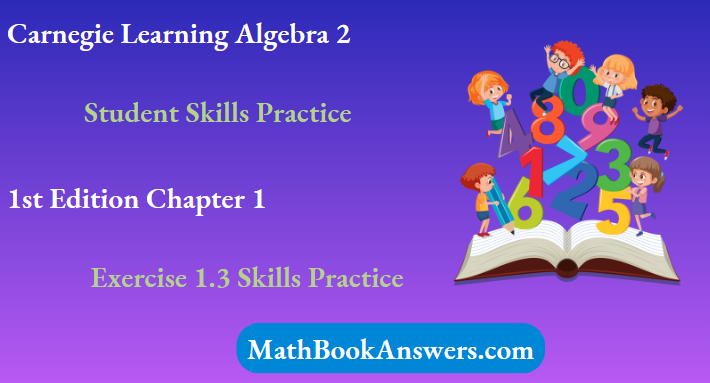
Page 247 Problem 4 Answer
Given the table.
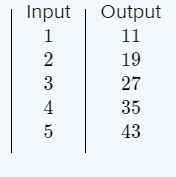
The aim is to find the expression.
For 1 then 11.
For 2 then 11+8.
For 3 then 11+8+8.
For n then 11+8(n−1).
Therefore, the expression is 11+8(n−1).
Page 248 Problem 5 Answer
Given:

To find: Determine whether the functions are equivalent.
From table, we write the equation as y=x2.
From graph we see that points in table are on graph.
For example (1,1),(2,4),……are on the graph.
All the points in table are on graph
The function in table is equivalent to function in graph
Skills Practice Exercise 1.3 Answers
Carnegie Learning Algebra II Student Skills Practice 1st Edition Chapter 1 Exercise 1.3 Skills Practice Page 248 Problem 6 Answer
Given equation is y=x2−7x+1
We calculate y for x=0 and for x=2
We thus conclude that functions are equivalent
Substituting x=0 in given equation.
we get y=1
We can see that (0,1) is on graph also.
Also we substitute x=2 in given equation
we get y=−9
Also, (2,−9) is a point on graph
Function y=x2−7x+1 and function in graph are equivalent
Page 248 Problem 7 Answer
Given function is y=5(x−1)+4 We calculate y for x=0 We Finally conclude that functions aren’t equivalent
For x=0
we get y=−1 from given equation But (0,−1) is not there on straight line in graph (0,8) is there on graph.
Function y=5(x−1)+4 and function in graph are not equivalent
Carnegie Learning Algebra II Student Skills Practice 1st Edition Chapter 1 Exercise 1.3 Skills Practice Page 249 Problem 8 Answer
Given equation is f(x)=3(x+1)
i.e. y=3(x+1)
We calculate y for x=1 We finally conclude that functions aren’t equivalent
We substitute x=1 in given equation we get y=6
(1,3) is there in table instead of (1,6)
i.e. (1,6) is not there in table
Function y=3(x+1) and function in table are not equivalent
Page 249 Problem 9 Answer
Given: Alton is selling a few handmade toys at a community sale. After the first hour, Alton has earned $5.
After the second hour, he has earned $10 and after the third hour, he has earned $15
To find Function of graph.
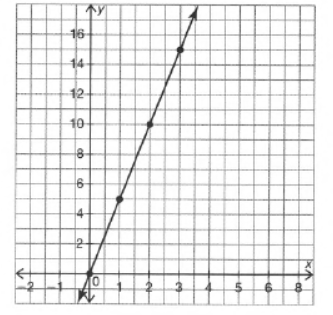
Equation is y=5x from given data.
We can write three points (1,5),(2,10),(3,15) from given data
These three points are on straight line from graph
Function y=5x and function in graph are equivalent
Carnegie Learning Algebra II Student Skills Practice 1st Edition Chapter 1 Exercise 1.3 Skills Practice Page 251 Problem 10 Answer
Graph shows model for no. of pages printedBefore the policy was created, one student had already printed a 5-page paper.
He continues to print 4 pages per day.
No. of pages printed = 4 ×No. of days + 5
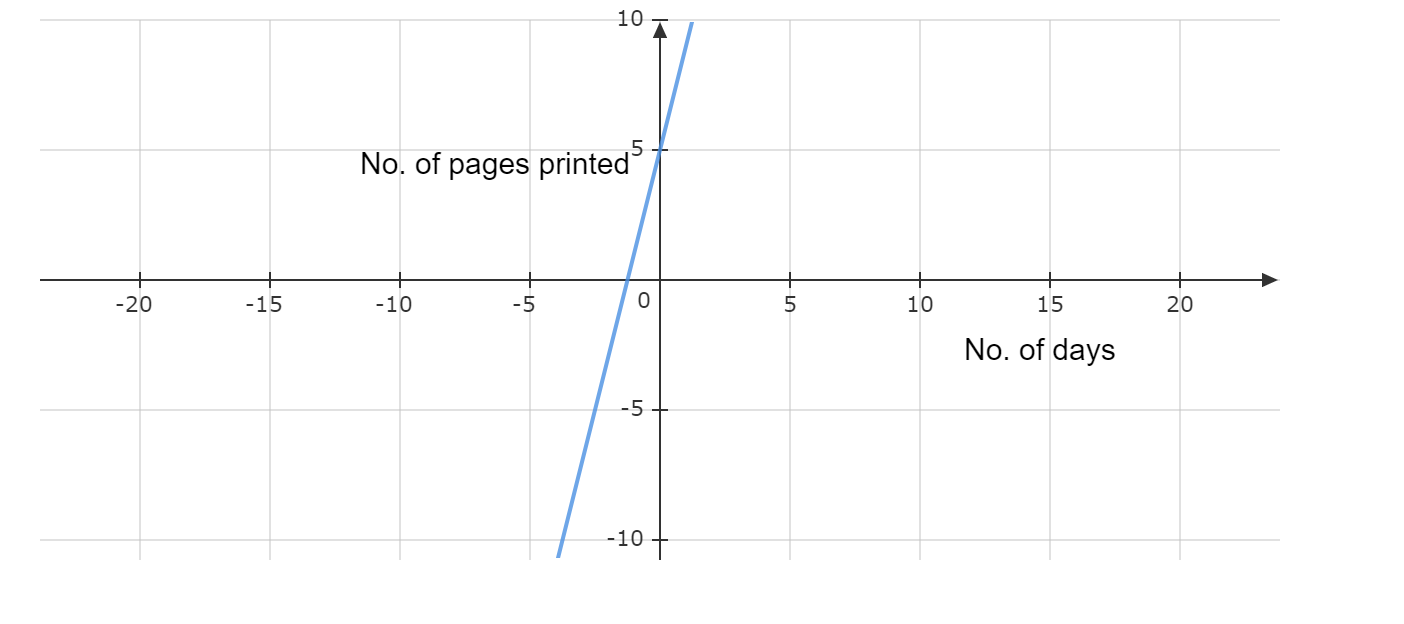
We model the number of pages the student prints.
No. of pages printed= 4×No. of days + 5
Page 252 Problem 11 Answer
We model the scenario as f(x)=−x2+5
Graph shows the model
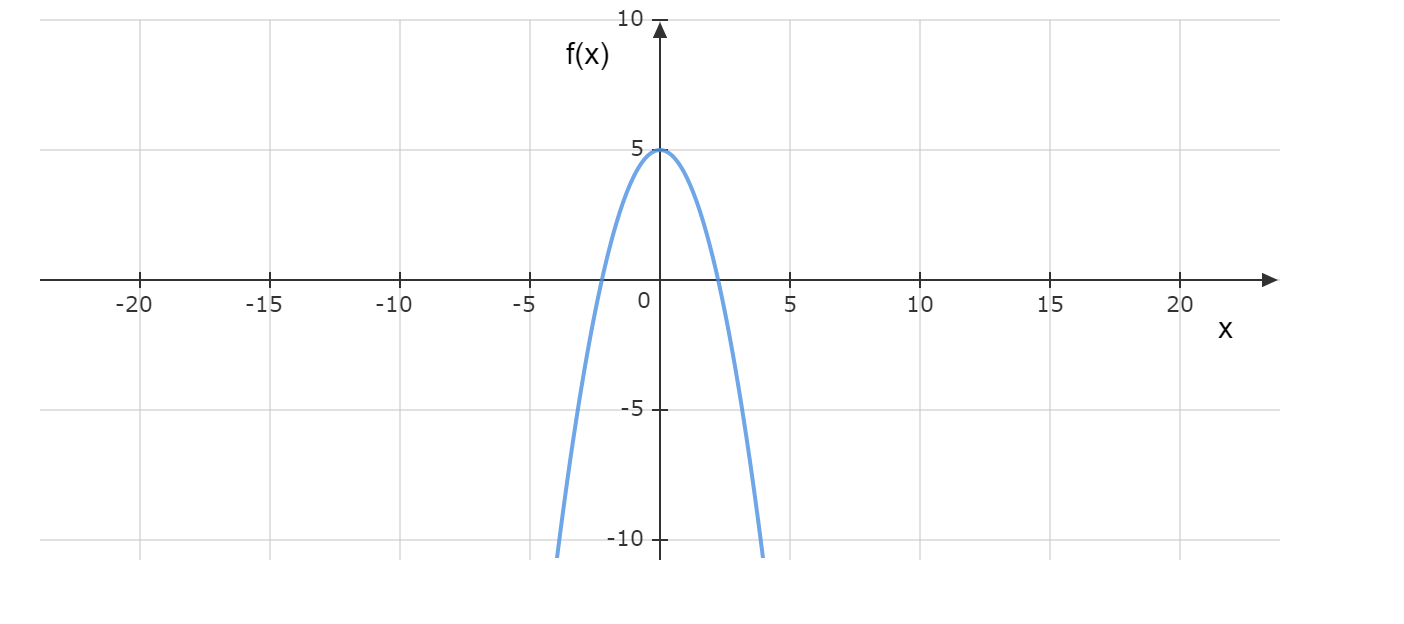
Model is f(x)=−x2+5
Page 252 Problem 12 Answer
We are given a scenario ‘The cube of x plus 5’.The objective is to model the given scenario using a table, a graph and a function.
Given: The cube of x plus 5
The function of the given scenario is given as, f(x)=(x+5)3
Now, we find the function value using a table:
We find the function value for five values of x:
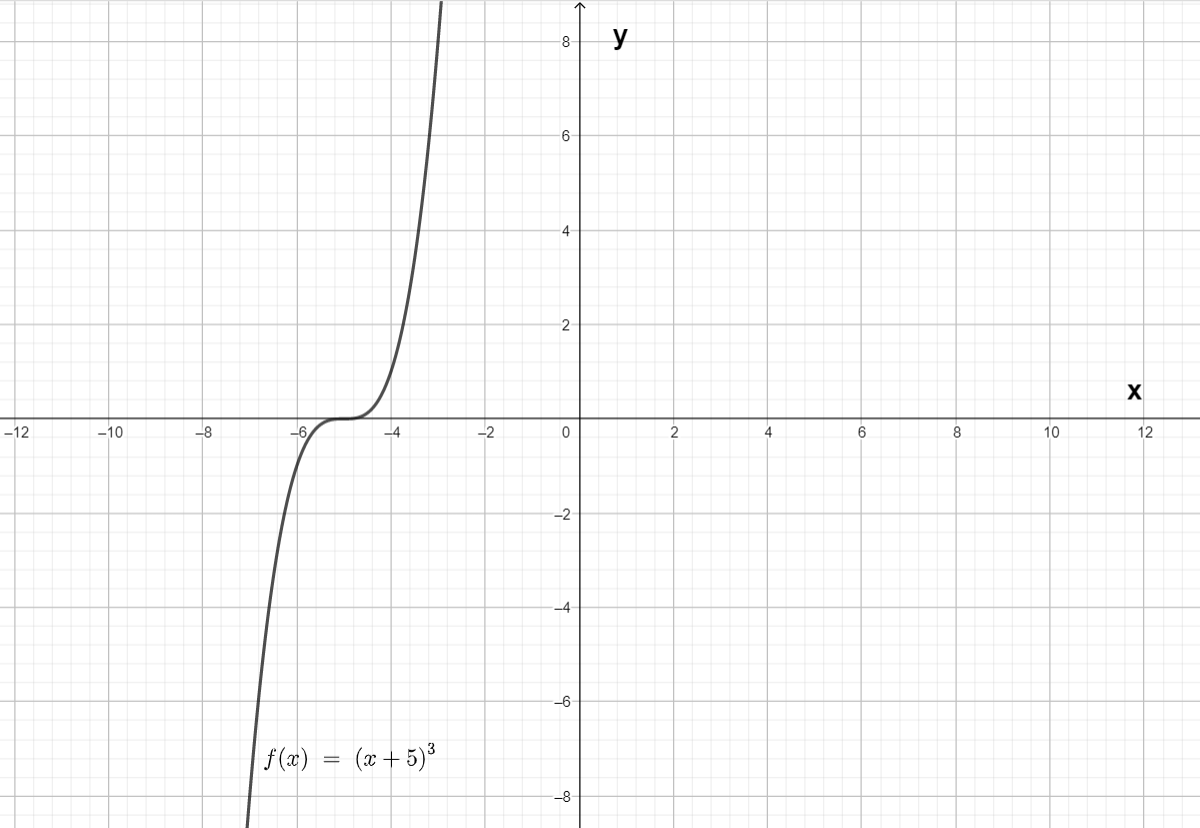
On graphing the value in the above table, we get
Hence, the function of the cube of x plus 5 is f(x)=(x+5)3
which on graphing we get,
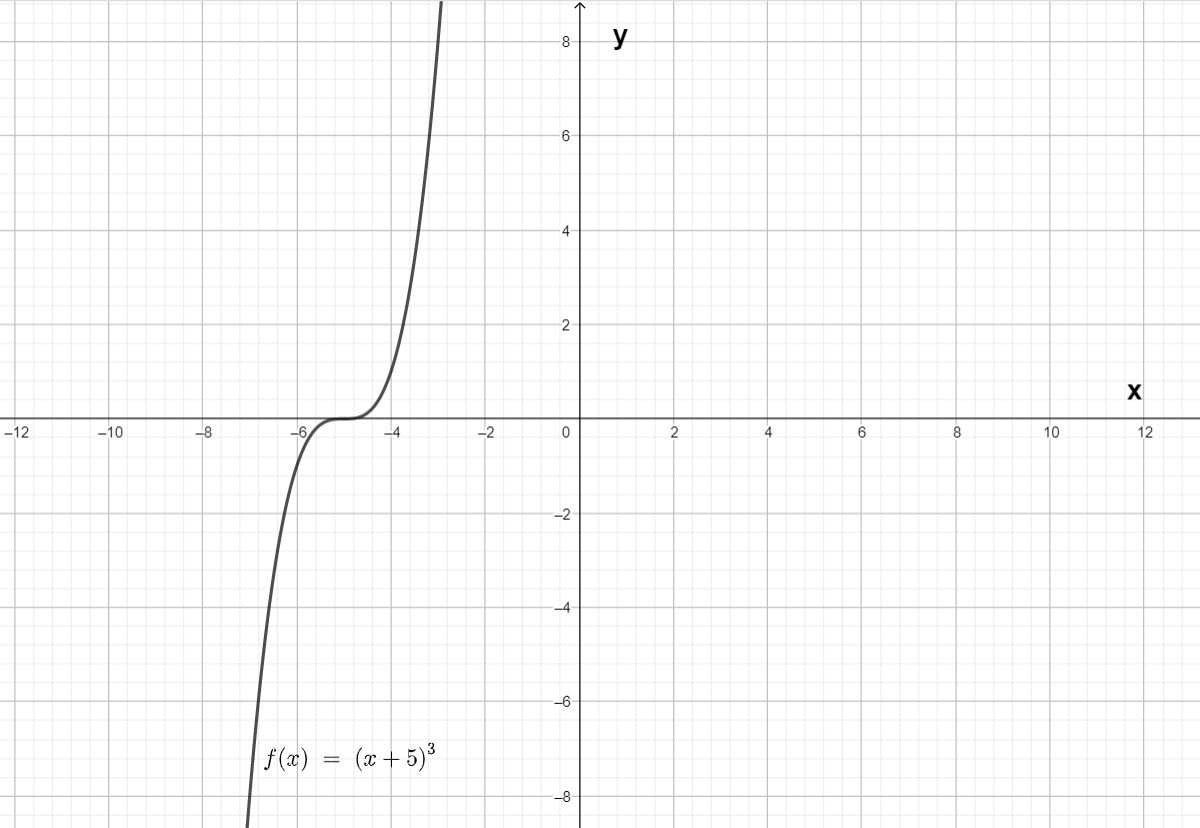
Algebra Ii Chapter 1 Skills Practice Solutions Exercise 1.3
Carnegie Learning Algebra II Student Skills Practice 1st Edition Chapter 1 Exercise 1.3 Skills Practice Page 253 Problem 13 Answer
We are given a problem that goes ‘Tommy is purchasing items from an online store.
The store charges $6 shipping and handling for each package.
‘The objective is to write an expression to represent the total shipping costs and find how much will Tommy pay in shipping and handling for 2 packages.
To do so, we find the function that models this scenario.
Given: Tommy is purchasing items from an online store. The store charges $6 shipping and handling for each package.
Then, the function that models this scenario isf(x)=6x which represents the total shipment cost.
For 2 packages, Tommy will pay:
f(2)=6×2
=$12
Hence, the expression that represents the total shipment cost is given by the function f(x)=6x and the cost for 2 packages is 12 dollars.
Page 253 Problem 14 Answer
We are given a problem that goes ‘A library has 45 books in their young adult science fiction collection.
During a collection drive, the library collects 9 new young adult science fiction books per day.
‘The objective is to find how many total young adult science fiction books will the library have after 1 week.
To do so, we find the function that models this scenario.
Given: A library has 45 books in their young adult science fiction collection.
During a collection drive, the library collects 9 new young adult science fiction books per day.
Then, the function that models this scenario is f(x)=9x where x represents the number of days.
After 1 week, the total young adult science fiction books will be:
f(7)=9×7
=63
Hence, the expression that represents the total young adult science fiction books at the library is given by the function f(x)=9x where x represents the number of days and there will be 63 young adult science fiction books at the library after 1 week.
Carnegie Learning Skills Practice Exercise 1.3 Explained
Carnegie Learning Algebra II Student Skills Practice 1st Edition Chapter 1 Exercise 1.3 Skills Practice Page 253 Problem 15 Answer
We are given a problem that goes ‘A group of friends is planning a trip to the movie theater.
The cost of one ticket for a movie is $8.50. The cost for each person to purchase snacks at the theater is $5.
‘The objective is to find how much will a group of 8 friends pay to purchase movie tickets and snacks at the theater.To do so, we find the function that models this scenario.
Given: A group of friends is planning a trip to the movie theater.
The cost of one ticket for a movie is $8.50.
The cost for each person to purchase snacks at the theater is $5.
Since the cost of one ticket for a movie is $8.50 and the cost for each person to purchase snacks at the theater is $5, then total cost per person will be=8.50+5 =$13.5
Then, the function that models the scenario is f(x)=13.5x
where x represents the number of friends.
A group of 8 friends will then pay:
f(8)=13.5×8
=108
Hence, the expression that represents the total cost of tickets and snacks is given by the function f(x)=13.5x and a group of 8 friends will pay 108 dollars for the tickets and the snacks.
Page 254 Exercise 1 Answer
We are given a problem that goes ‘A bookstore advertises a book signing by calling each of the 12 members of their book club.
Each member of the book club calls two additional people.
The table lists the number of people who receive a call.’
The objective is to find how many people will receive a call in the 4th round of calls.
To do so, we find the function that models this scenario.
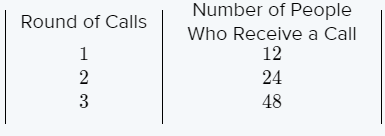
Given: A bookstore advertises a book signing by calling each of the 12 members of their book club.
Each member of the book club calls two additional people.
Thus, the function that models this scenario is f(x)=12x where x represents the rounds of calls.
Then, number of people receiving a call in the 4th round of calls is:
f(4)=12×4
=48
Hence, the expression that represents the number of people receiving calls in different rounds of calls is given by the function f(x)=12x where x represents the rounds of calls and the number of people receiving a call in the fourth round of calls are 48.
Carnegie Learning Algebra II Student Skills Practice 1st Edition Chapter 1 Exercise 1.3 Skills Practice Page 254 Exercise 2 Answer
We are given a problem that goes ‘A photographer takes 46 photos per hour during a soccer game.
‘The objective is to find how many photos does the photographer take if the game lasts 3.5 hours.
To do so, we find the function that models this scenario.
Given: A photographer takes 46 photos per hour during a soccer game.
Thus, the function that models this scenario f(x)=46x where x represents the number of hours.
Then, the number of photos the photographers take if the game lasts 3.5 hours:
f(3.5)=46×3.5
=161
Hence, the expression that represents the number of photos taken by the photographers per hour during a soccer game is given by the function f(x)=46x where x represents the number of hours and the number of photos the photographers take if the game lasts 3.5 hours are 161.
Page 254 Exercise 3 Answer
We are given a problem that goes ‘ The high school choir hosts a concert for the community.
The members of the choir sell tickets for the concert. Each member of the choir sells 3 tickets.
Tickets are also sold at the door before the concert. A total of 125 tickets are sold at the door.
‘The objective is to find how many total tickets are sold if there are 18 members of the choir.
To do so, we find the function that models this scenario.
Given: The high school choir hosts a concert for the community.
The members of the choir sell tickets for the concert.
Each member of the choir sells 3 tickets.
Tickets are also sold at the door before the concert. A total of 125 tickets are sold at the door.
Thus, the function that models this scenario is f(x)=3x where x represents the number of members of the choir.
Then, if there are 18 members of the choir, the total number of tickets sold are:
f(18)=3×18
=54
Hence, the expression that represents the total number of tickets sold by the members of the choir is given by the function f(x)=3x where x represents the number of members of the choir.
The total number of tickets sold by the 18 members of the choir are 54.
Chapter 1 Exercise 1.3 Skills Practice Guide
Carnegie Learning Algebra II Student Skills Practice 1st Edition Chapter 1 Exercise 1.3 Skills Practice Page 255 Exercise 4 Answer
We are given two expressions 5x+3+3x2−2 and (5x+1)+3x2.
The objective is to determine whether the given two expressions are equivalent or not.
To do so, we simplify both the expressions.
Given: 5x+3+3x2−2and (5x+1)+3x2
We simplify the first expression:
5x+3+3x2−2=3x2+5x+1
Rewriting the second expression, we get:
3x2+5x+1
We see that, the two expressions are equivalent.
Hence, the two expressions 5x+3+3x2−2 and (5x+1)+3x2 are equivalent.
Page 255 Exercise 5 Answer
We are given two expressions 3x2+(x−2)(x+1)and (2x−2)(2x+1).
The objective is to determine whether the given two expressions are equivalent or not.
To do so, we simplify both the expressions.
Given: 3x2+(x−2)(x+1)…(1)and (2x−2)(2x+1)…(2)
We first simply expression (1):
3x2+(x−2)(x+1)=3x2+x2+x−2x−2
=4x2−x−2
Now, we simplify expression (2):
(2x−2)(2x+1)=4x2+2x−4x−2
=4x2−2x−2
We see that, the two expressions are not equivalent.
Hence, the two expressions 3x2+(x−2)(x+1) and (2x−2)(2x+1) are not equivalent.
Carnegie Learning Algebra II Student Skills Practice 1st Edition Chapter 1 Exercise 1.3 Skills Practice Page 255 Exercise 6 Answer
We are given two expressions (2x+1)2−2x(x−3) and 6x2+6x+2−(2x−1)2.
The objective is to determine whether the given two expressions are equivalent or not.
To do so, we simplify both the expressions.
Given: (2x+1)2−2x(x−3)…(1)
6x2+6x+2−(2x−1)2…(2)
We first simplify expression (1):
(2x+1)2−2x(x−3)=4x2+1+4x−2x2+6x
=2x2+10x+1
Now, we simplify expression (2):
6x2+6x+2−(2x−1)2
=6x2+6x+2−(4x2+1−4x)
=6x2+6x+2−4x2−1+4x
=2x2+10x+1
We see that, the wo expressions are equivalent.
Hence, the two expressions (2x+1)2−2x(x−3) and 6x2+6x+2−(2x−1)2 are equivalent.
How To Solve Skills Practice Exercise 1.3
Carnegie Learning Algebra II Student Skills Practice 1st Edition Chapter 1 Exercise 1.3 Skills Practice Page 255 Exercise 7 Answer
Given: 7x2+1−(3x−1)(x+4) and 2x(x−3)+2x2−5x+5
To find: if L.H.S. and R.H.S. are equal, we need to expand and simplify both the equations and then compare them to prove that they are equivalent.
Expanding and simplifying L.H.S.
7x2+1−(3x−1)(x+4)
=7x2+1−(3x2+12x−x−4)
=7x2+1−3x2−12x+x+4
=4x2−11x+5
Expanding and simplifying R.H.S.
2x(x−3)+2x2−5x+5
=2x2−6x+2x2−5x+5
=4x2−11x+5
Comparing the simplified L.H.S and R.H.S.
L.H.S. = R.H.S.
Hence Proved
Yes, the equations (7x2+1)−(3x−1)(x+4) and 2x(x−3)+2x2−5x+5 are equivalent
Page 256 Exercise 8 Answer
Given: 8x(2x+1)+8x2 and 8x(3x+1)
To find :if L.H.S. and R.H.S. are equivalent,
Expanding L.H.S.
8x(2x+1)+8x2=16x2+8x+8x2
=24x2+8x
Expanding R.H.S.
8x(3x+1)=24x2+8x
Comparing L.H.S. and R.H.S.
L.H.S.=R.H.S.
Hence proved
Yes, the equations 8x(2x+1)+8x2 and 8x(3x+1) are equivalent
